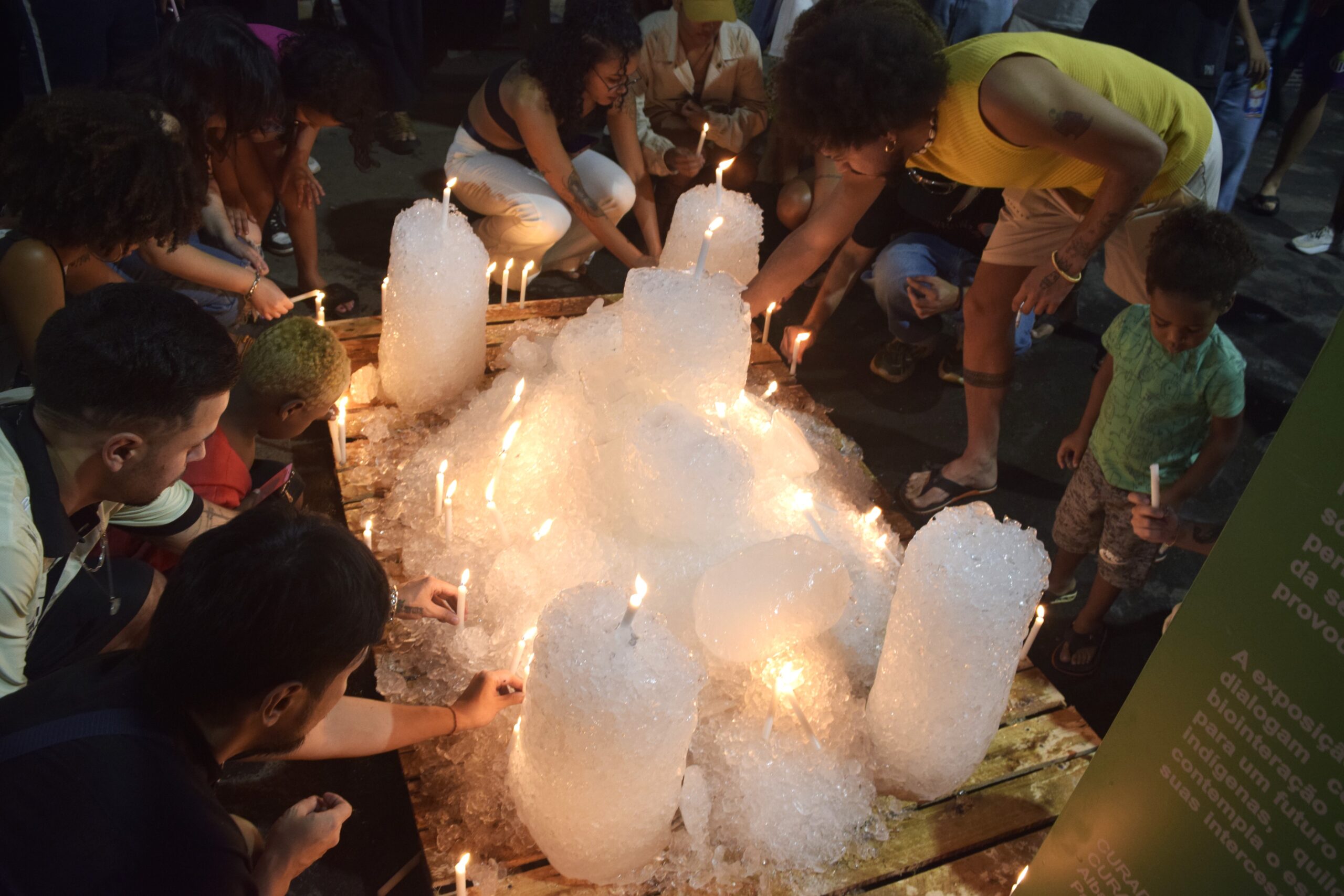
Clique aqui para Português
 This article is part of a series created in partnership with the Behner Stiefel Center for Brazilian Studies at San Diego State University, to produce articles for the Digital Brazil Project on environmental justice in the favelas for RioOnWatch.
This article is part of a series created in partnership with the Behner Stiefel Center for Brazilian Studies at San Diego State University, to produce articles for the Digital Brazil Project on environmental justice in the favelas for RioOnWatch.
On June 13, the favela of Santo Amaro in Catete, a neighborhood in the South Zone of Rio de Janeiro, experienced an evening of environmental awareness through art and culture. In its fourth edition, ‘Climate Gathering: Climate of Art‘ brought together residents, teachers, activists, collectives, and others interested in environmental issues within the favela. The event, which attracted some 120 people, connected communities with climate-related topics using cultural expression. This annual gathering is organized by the collective Climate of Change Coalition.
The 2024 edition brought: a Knowledge Battle hosted by the Santo Amaro Cultural Circle, where MCs and rappers improvised rhymes on the theme of climate change; a sustainable fashion show with the Arteiros Institute; the ‘Sanctuary’ exhibition, featuring ten artists; and a guided tour of Galeria 2050, an art and technology exhibition space in Santo Amaro. The edition also featured a partnership with the Imbariê Art Festival and included the presence of collectives Ademafia and Simbiose, as well as Councilwoman and former Municipal Secretary of Environment and Climate Tainá de Paula.
Born and raised in the West Zone neighborhood of Realengo, Marcele Oliveira, creator of the gathering and one of the Coalition’s co-founders, shared that organizing the event stemmed from the desire to discuss climate issues within the favela:
“This event is about discussing the fight against climate change in peripheral areas with those who experience its effects every day and feel them firsthand, without this ‘it’s someone else’s problem’ attitude… The people who suffer it most don’t know the problem’s real name: environmental racism… They can’t pay attention [to it] because of the hustle and bustle of life… The climate gathering is a way to talk about this in a laid-back way.”
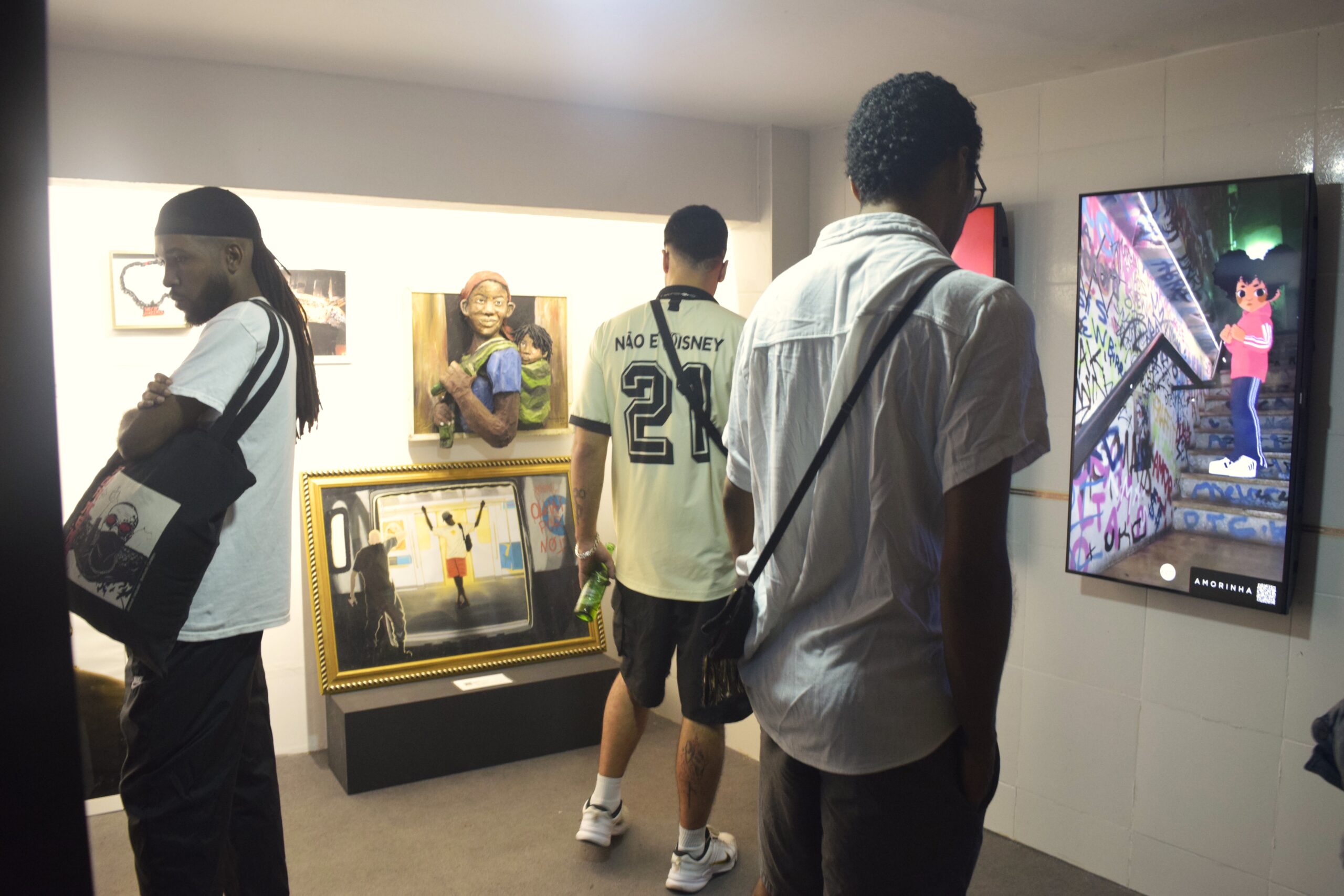
The Climate of Change Coalition brings together youth from favelas and peripheral areas to discuss and propose environmental actions both within and outside favelas. The group has been present at major environmental events such as COP27 in Egypt, COP28 in Dubai, the Amazon Dialogues, and G20 activities.
“The idea is that this is a tiny bit of what we need to do, but it’s the way [we found] to make this tiny bit reach people in the favela. By reaching [them with] the rap battle, which always takes place, but has never focused on the theme of climate change, though it will today. It’s the way to reach the crowd that’s always hanging out at the bar, at the barber shop, and will show up because there’s something going on. If we think about historical and ancestral retrieval and everything colonialism took from favelas—the relationship with herbs, the relationship with the soil… We tend to normalize these absurdities and distance ourselves from something that was ours, our people’s.” — Marcele Oliveira
The event’s opening featured a poetic performance by professor and curator Osmar Paulino, a native of Imbariê—a neighborhood in Duque de Caxias, a municipality in Greater Rio’s Baixada Fluminense region. In it, participants lit candles among ice cubes, alluding to the melting of the polar ice caps due to global warming. This activity was part of the ‘Sanctuary’ exhibition, which projected images of works by ten artists: Alafumin, Albarte, Anav, Ayra Aziza, Mariana Maia, Pandro Nobã, Sofia Gama, Sofia Rocha, Tarso Tabu and Thais Basilio. For Paulino, who was responsible for the artistic creation of the exhibition, the role of art in promoting a new consciousness, as a tool in the face of environmental challenges, is extremely powerful:
“Art is not distanced from society; it is produced within it. And all art stems from an idea, which in turn stems from a culture. The big question is to know which culture and which ideas. What we have today is a dominant European culture that superimposes indigenous cultures and peoples. So, what kind of art is present in galleries and museums? Does this art generate ideas for life or for death? What we produce with art is extremely important. It’s there so that we can change the way we deal with the world and with ourselves.”
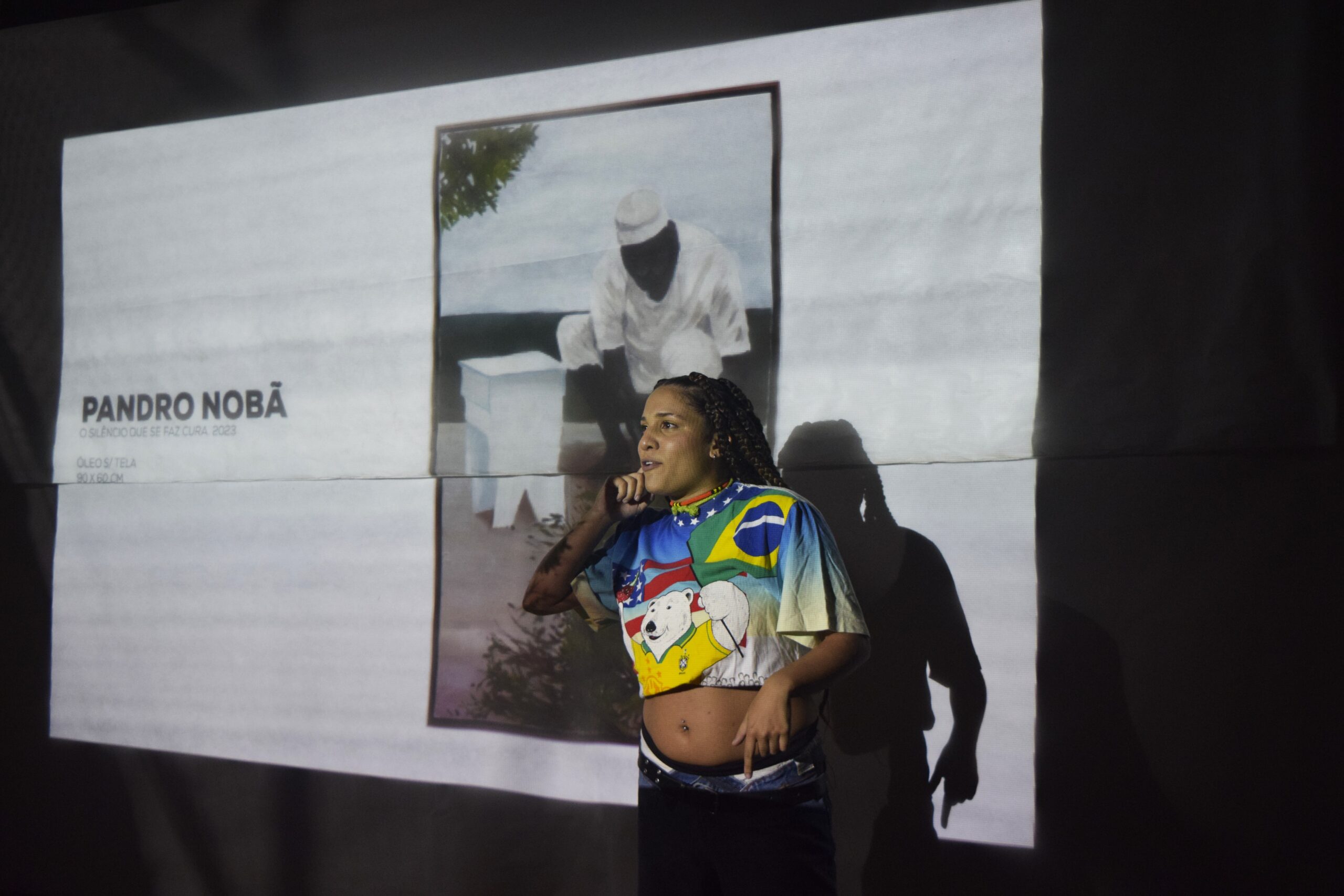
“Now we have a look inside the United Nations, after much unfolding, thinking of culture as something that should be in adaptation plans. Thinking of climate education as an investment, not as something trivial. It can engage more people with the issue and prevent them from falling for fake news or producing misinformation, and especially not despairing about the end of the world. We have the role of postponing, as Ailton Krenak would say. Postponing is not just about doing our part; it also involves networking, impact, legislative work, public policy… How many lives can we save, how much impact can be minimized if we receive critical information in advance? The siren sounds [during heavy rains], and people need to know where to go. So, art is a way to raise awareness and save lives because it can convey crucial information.” — Marcele Oliveira
Among the event’s activities, there was a sustainable fashion show featuring models from the Arteiros Institute. Juliana Coutinho, a cultural producer born and raised in Complexo da Torre in the city of Queimados, in Greater Rio’s Baixada Fluminense region, argued that fashion can make a significant contribution to building a culture of sustainable consumption and transforming the relationship that favelas have with the issue:
“Clothing brings the perspective that you don’t need to invest in complex things, because fashion has a different social role and holds a unique meaning for each person. If you’re a boy who’s never had a pair of sneakers and someone tells you not to buy Nikes because they’re made in such and such way [that’s not environmentally friendly], that won’t mean anything to you because you’ve never had a pair. But if we think of other ways to reuse tangible things [that people have already had access to] and are wasted due to excessive consumerism, we’re showing another way of consuming.”
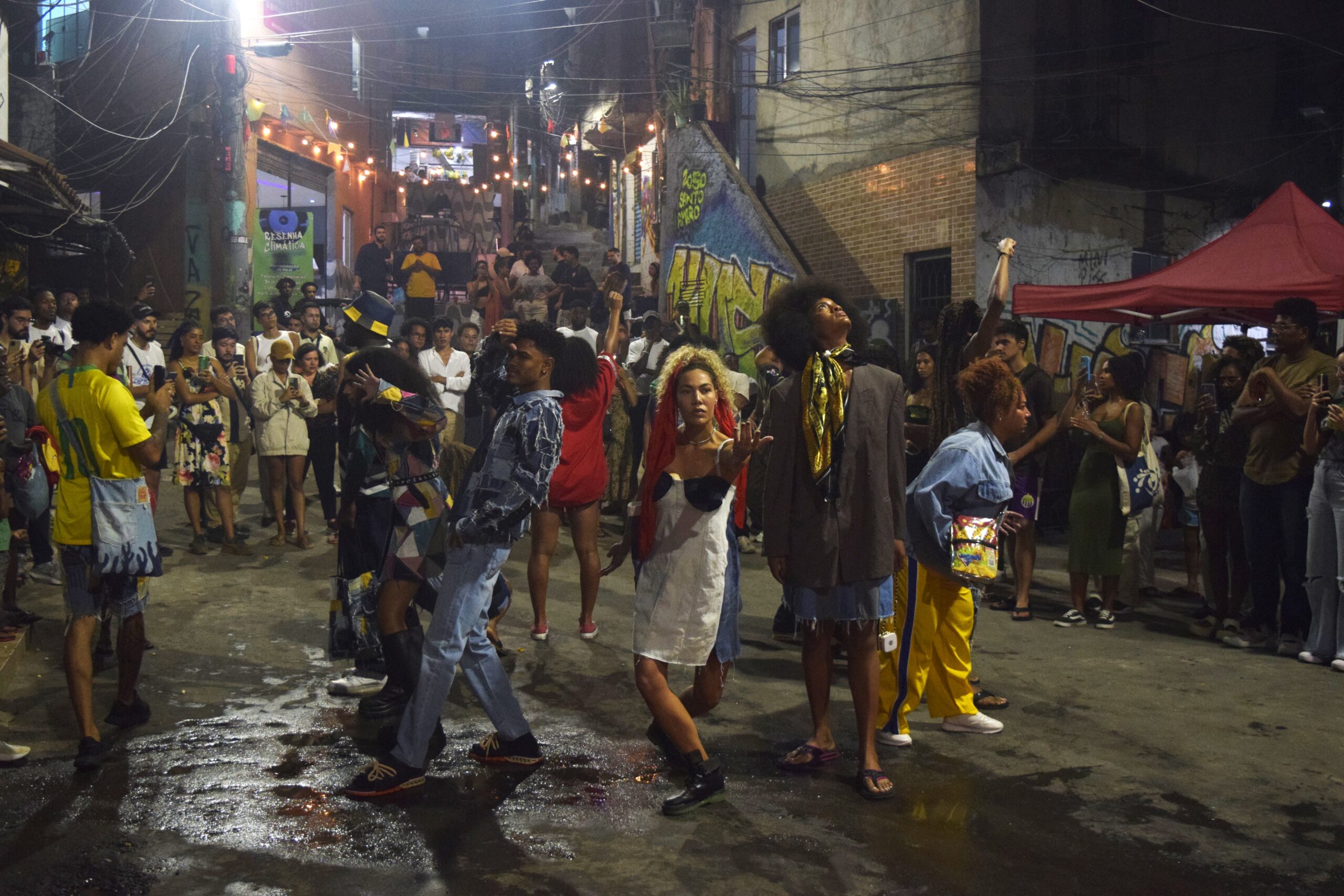
Nathan Nascimento, a stylist and teacher also born and raised in Complexo da Torre in Queimados, emphasized that a shift in mindset regarding consumption has the potential to transform the entire production chain.
“A good phrase we can use for encouragement is that the piece you’re looking for already exists. It might be in a landfill, in an improper place, with someone who isn’t using it. Why do you throw away clothing along with your kitchen and household waste? There are other ways to actually impact the planet, like using thrift stores. We know that today, the fashion industry is the second largest in production, second only to the car industry. And, whether we like it or not, it also requires machinery, just like the automotive sector. Fashion uses large amounts of water and land, and also produces carbon dioxide. We need to think about the brands we consume and whether they care about this excessive production.”
In the technological realm, Gean Guilherme, a member of the 2050 Collective and a native of Santo Amaro, explained that integrating favelas into the digital market can significantly contribute to community development. Training residents in the digital area is therefore crucial.
“Just as technology is used for evil, we’re in a position to use it consciously. We can create new solutions and pathways through these new technologies. Until we understand what this language that these guys created is and grasp it in our own way, there will be a huge barrier, you know… How do I get the lady who sells produce to understand what we’re doing and help bring innovation to her business? This process [is going on] at a global level, but she doesn’t know what it is.”
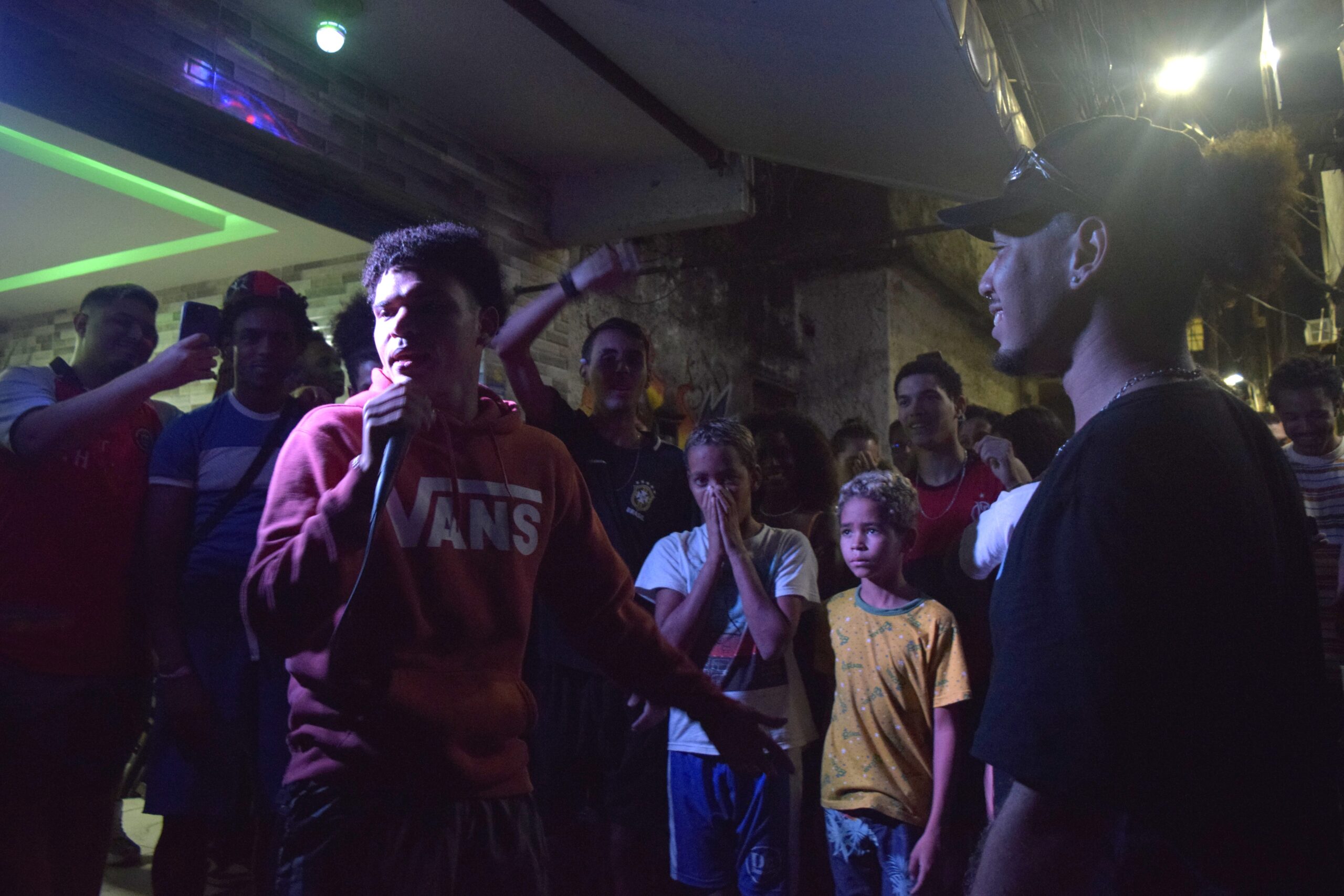
The Knowledge Battle closed the event, challenging participants to rhyme about climate change for the first time in Santo Amaro. Additionally, there was a poetry slam with free recitations of poems encouraging action against climate change.
“Call her, call her, and she’ll come,
hers is a calling that ignites.
Fire destroys yet also brings life.Our ancestors knew this ancient rite,
fire’s power, both dark and bright,
technology now shines its light.Social evolution takes its flight,
fire sparked the industrial might,
fuelling capital’s relentless fight.
We bake inside the metal hull,
ensuring rice and beans and bellies full.To avoid exhaustion, we catch some rays,
sipping cold ones at Pontal’s sandy bays.To truly enjoy this, grasp climate’s sway,
with out-of-season rains stealing breezes away.
And when it floods, things get wild when you’ve got so little,
inequality glaring—a clear, lethal riddle.I also can’t fail to mention the wildfires that, with or without sense and authorizations,
destroy and cause countless complications.
So heed the call, and warm up to our unity,
bring comfort to all, in every community.” — Juliana Coutinho
The greatest lesson left by the Climate Gathering: Climate of Art event is that it is possible to take action, each within their own profession and in various ways, to mitigate the effects of climate change. Favela residents, the population most affected by increasingly common extreme weather events, must have a leading role in this debate, preserving their own life strategies, epistemology, culture, and means of engagement without being whitewashed. It is urgent to make favelas climate-resilient, but environmental and climate racism will only be overcome when initiatives like this one in Santo Amaro become public policies, with budget allocation and State support.
About the author: Amanda Baroni Lopes is a journalism student at Unicarioca and was part of the first Journalism Laboratory of Maré community newspaper Maré de Notícias. She is the author of the Anti-Harassment Guide on Breaking, a handbook that explains what is and isn’t harassment to the Hip Hop audience and provides guidance on what to do in these situations. Lopes is from Morro do Timbau and currently lives in Vila do João, both favelas within the larger Maré favela complex.
